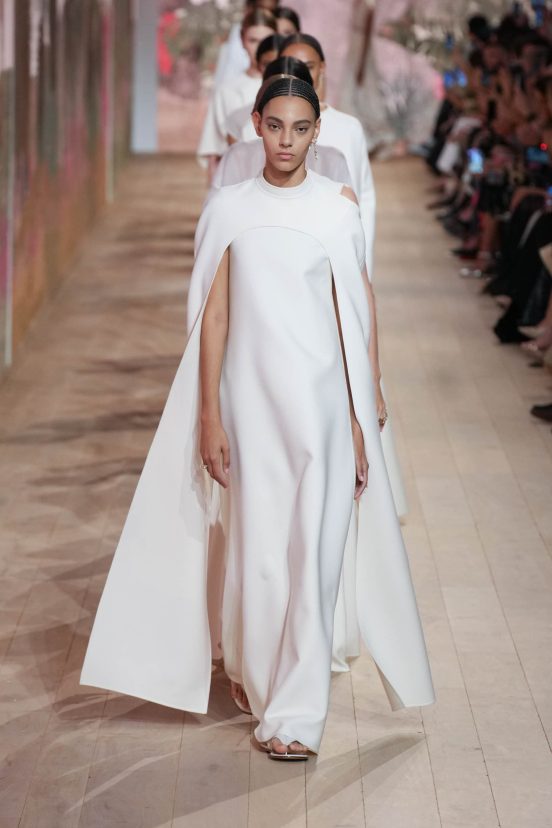Review of Christian Dior Fall 2023 Couture Fashion Show
Gilded Goddesses
By Mark Wittmer
“Chic means boring – don’t tell the French.” So proclaims Phoebe Waller-Bridge in an iconic Fleabag aside that, once heard, can’t be forgotten, whether you laugh because she’s right or you’re annoyed because she’s right.
Creative director Maria Grazia Chiuri’s (though perhaps it is just as attributable to LVMH) Fall 2023 haute couture collection for Christian Dior brings this quip ineluctably to mind. It was totally chic, undeniably beautiful, timeless, elegant, and – boring.
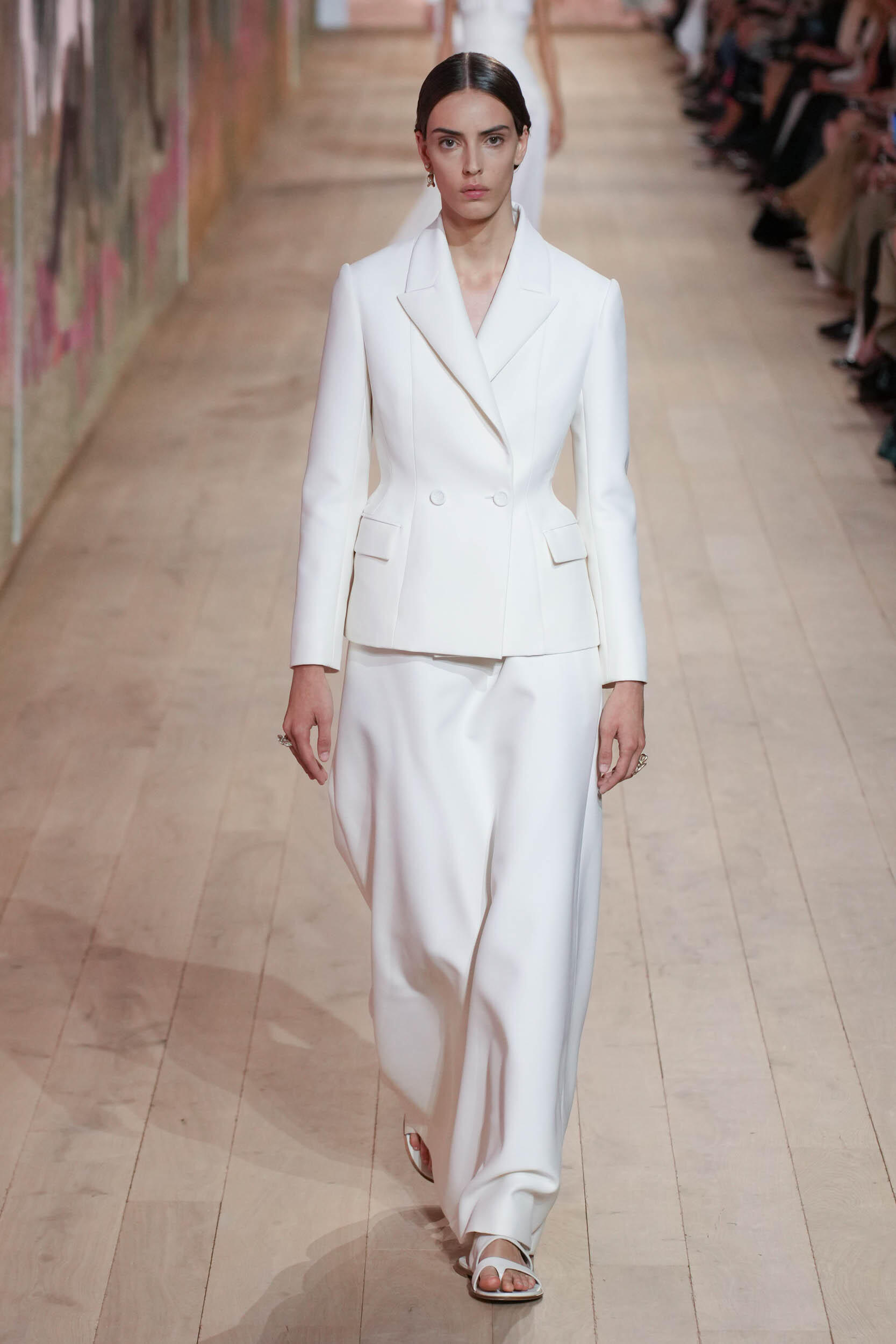
The collection stoically carried forward Chiuri’s couture practice of infusing wearable, classically elegant looks with intricately crafted decoration and construction.
The collection followed the established formula of being held at the Musée Rodin, with the walls featuring artwork by a contemporary woman artist – this time Marta Roberti that have been -interpreted as large-scale embroideries by the artisans of the Chanakya ateliers and School of Craft in Mumbai, longtime Chiuri collaborators.
The pinks and greens of these wall hangings provided most of the show’s color, as Chiuri opted for a neutral color scheme of white, grey, black, beige, silver, and soft gold for her elegant evening gowns and feminine takes on tailoring – a European take on the gilded goddesses of ancient religions. Archetypal sartorial elements like tunics, coats, and capes provide a canvas for modern perfections of ancient handcrafts: lacework, beading, embroidery, delicate knits, and open-work weaving.
The consistent shoe choice of a simple flat sandal further cements the Ancient Greek goddess sculpture reference, while the touch of a single earring on each look lends elegant asymmetrical adornment.

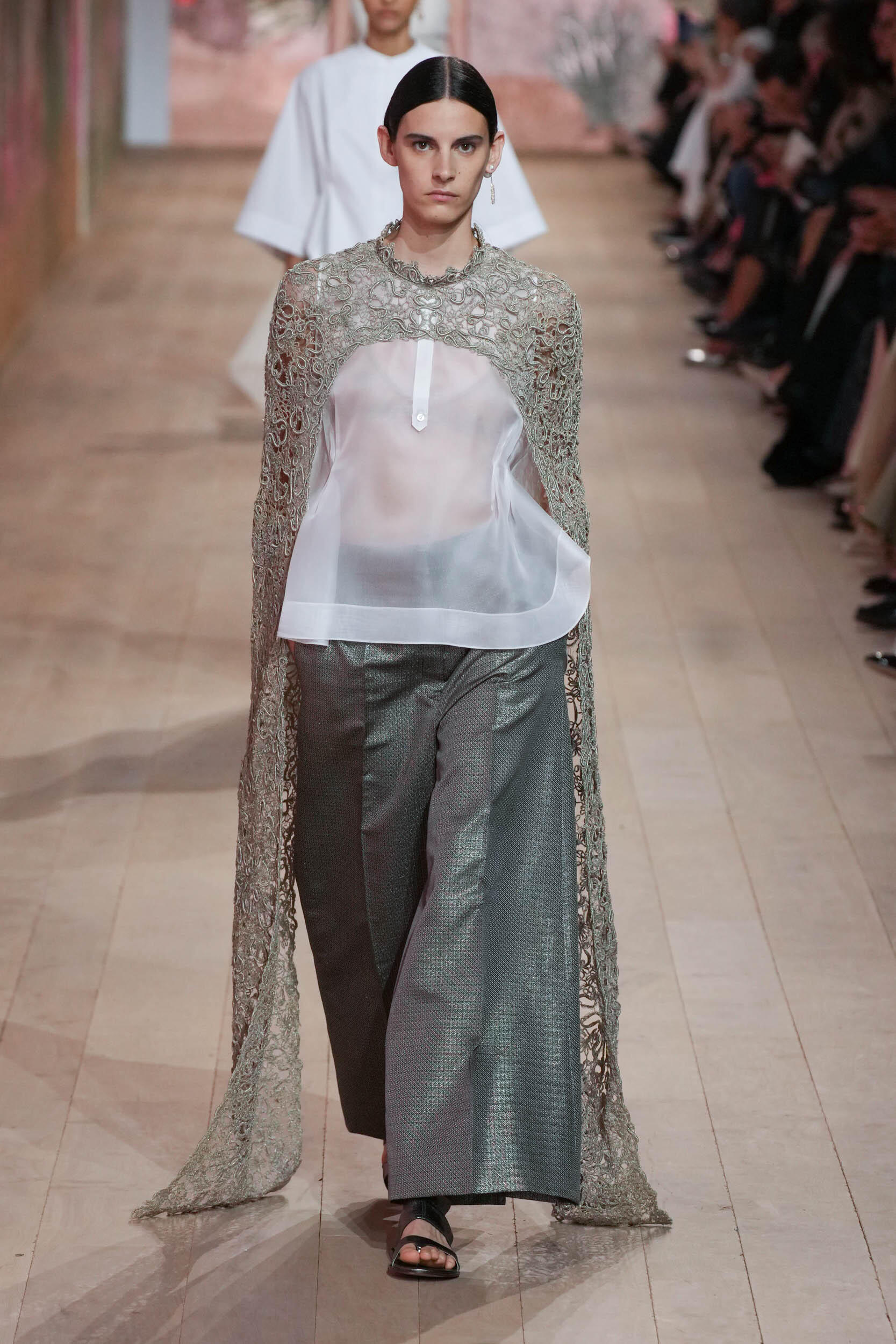
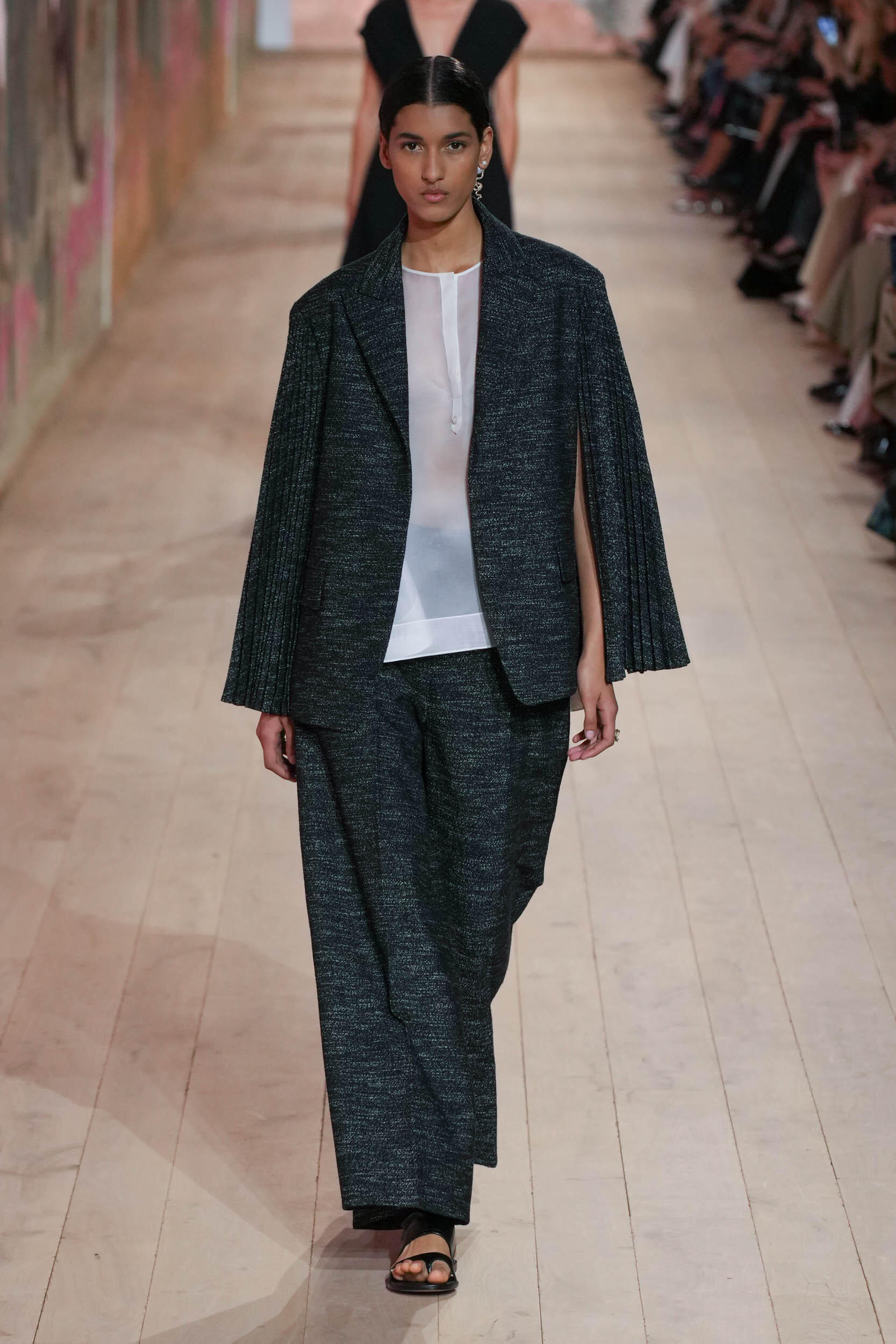
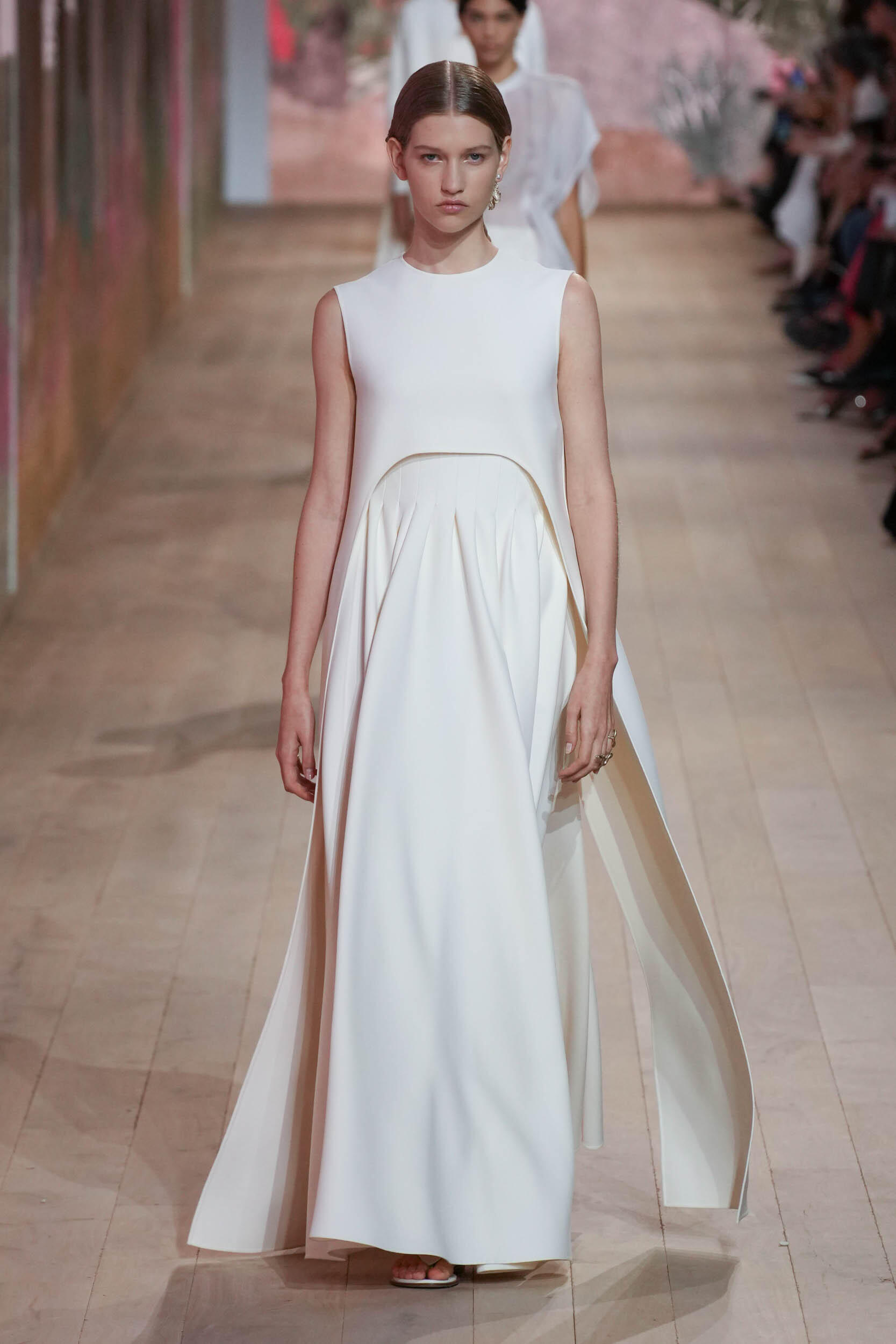
It’s an often overlooked fact that Ancient Greek, Roman, and Egyptian sculptures were almost always painted. While there is an impersonal allure to the timeless serenity of white marble, we in the present don’t see them the way in which they were created: vibrant with the colors of life.
There is something of that disconnect between seeing classical sculptures in a museum and experiencing them in the intoxicating religious and fecund social context of their own time detectable here.
When couture offers such an opportunity for imagination and innovation, why do Chiuri’s couture feel so much less exciting than her ready-to-wear (which, to be honest, doesn’t have too many surprises either)? As the couture line’s inclusion of Monsieur Dior’s first name points out, it does seek to address a sense of history and legacy. But in his own time, Dior wasn’t “timeless;” his new look was fresh and of the moment and even provocative. Leaning into the now, it repudiated the austerity of the past.
Comparisons aren’t always helpful, but we haven’t really seen this spirit at Dior since John Galliano’s time at the house, when he brought a wicked sense of drama and imagination to the runways, or perhaps Raf Simons’ – which, while it was definitely more concerned with the Dior archive, still could feel cutting-edge.
That’s what feels missing in this collection, and across most of Dior’s recent couture outings: an element of surprise. The clothing is gorgeous, beautifully constructed, and a powerhouse of the highest levels of craftsmanship. But they don’t feel inspired or inspiring.
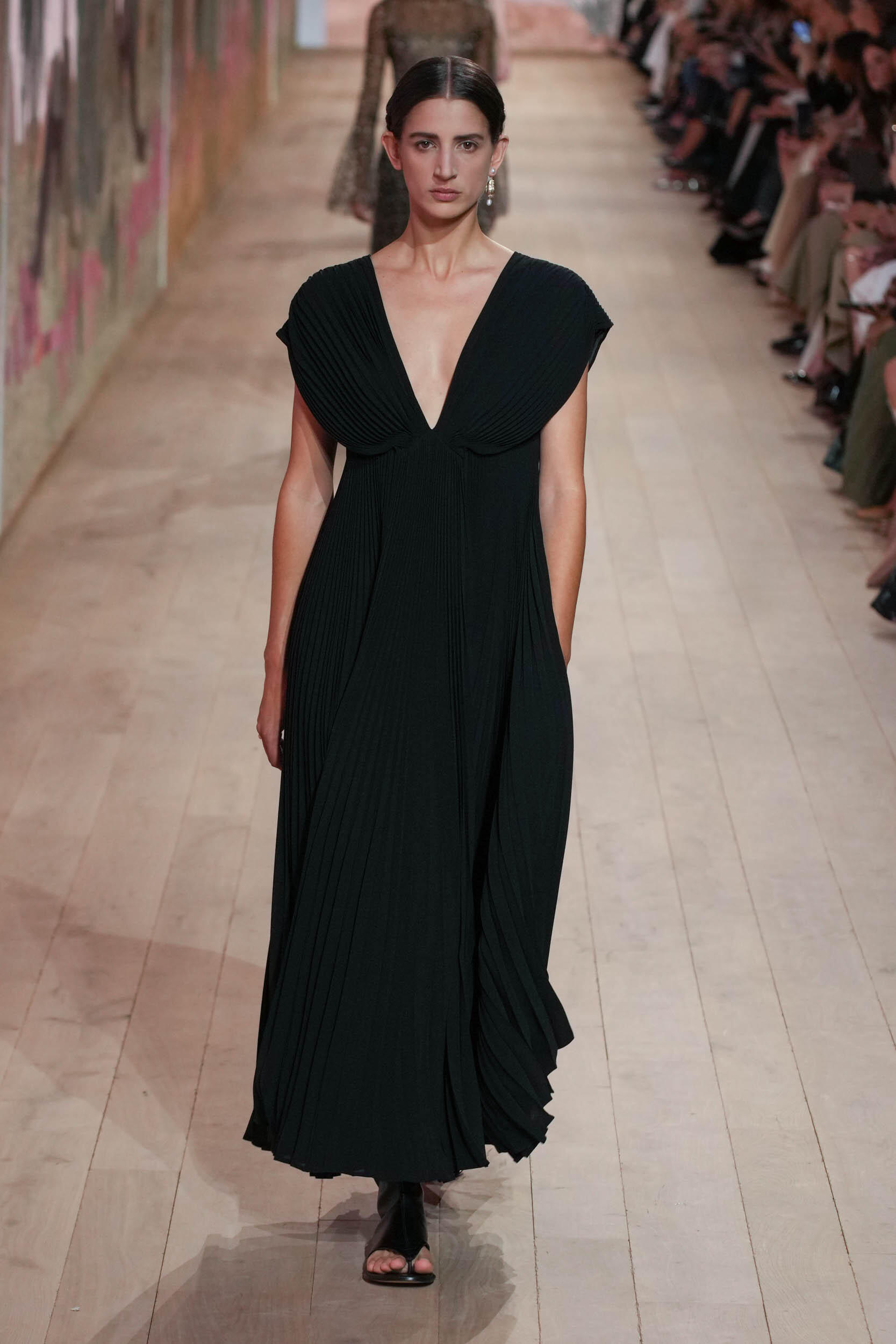
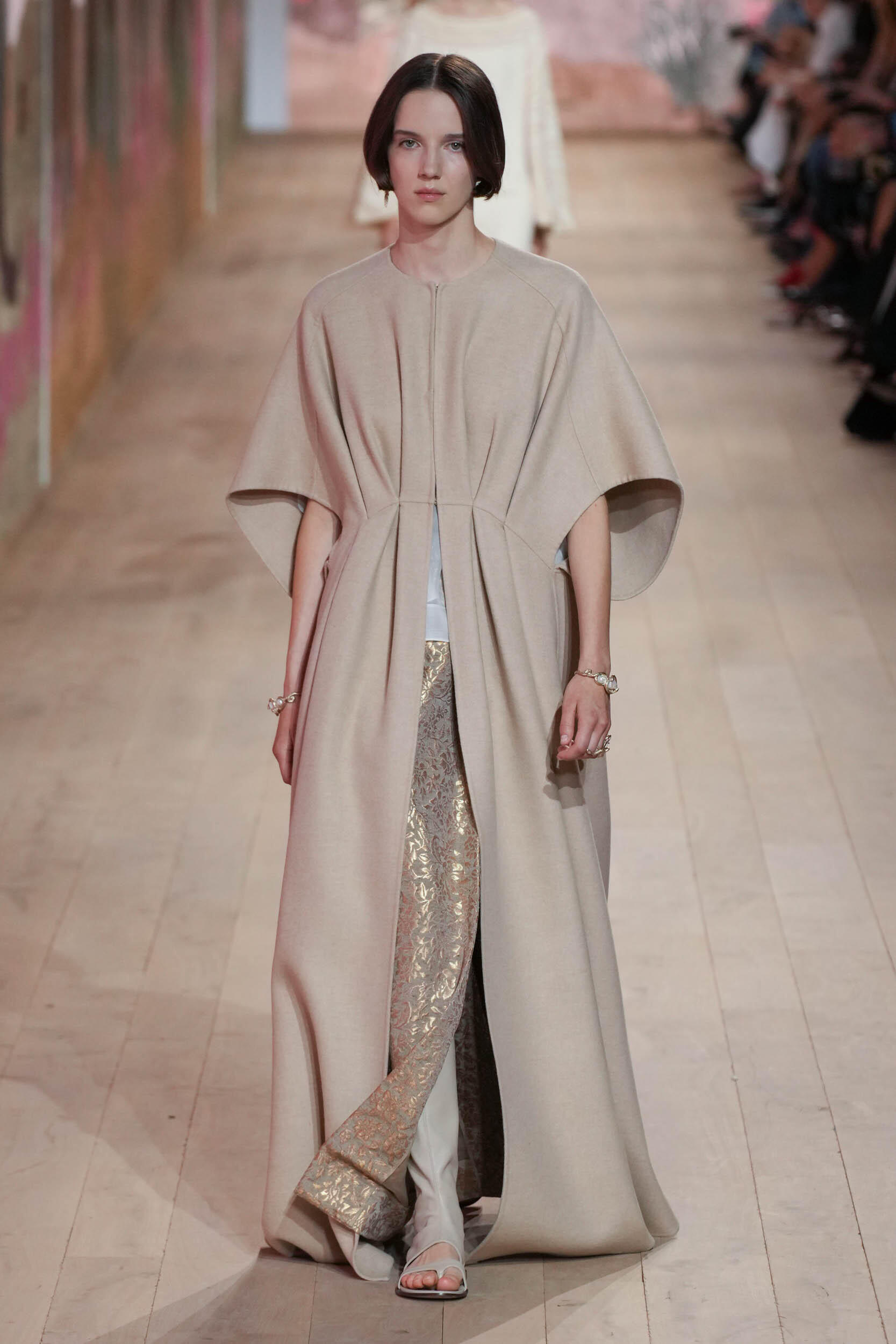
As we know that Maria Grazia Chiuri can do a lot more than what she does so well here today, we can only suspect that this is more of a financial decision from LVMH. Clothes that take creative risks also take financial risks, we get it. But it’s a curious irony that in opting for a perceived sense of timelessness, these contemporary couture collections from the biggest brands actually reflect the most impactful contemporary meta-trend in the fashion industry: how it is becoming more and more corporate.
